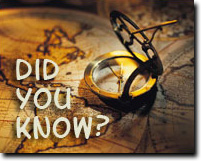|

 While some people love a deal at the clothing market and don't mind digging through the piles of clothes and merchandise, others like the organization of the mall shops. I am one of those organized people. For example, I immediately unpack and sort my clothes once aboard and in my cabin. I like being able to find things quickly and easily. I know right where to go for my silk shirts and my favorite CD. Oh my, could you imagine having 100,000 songs on an mp3 player and not having a way to sort them? A nightmare! While some people love a deal at the clothing market and don't mind digging through the piles of clothes and merchandise, others like the organization of the mall shops. I am one of those organized people. For example, I immediately unpack and sort my clothes once aboard and in my cabin. I like being able to find things quickly and easily. I know right where to go for my silk shirts and my favorite CD. Oh my, could you imagine having 100,000 songs on an mp3 player and not having a way to sort them? A nightmare!
In order to make sense of all the knowledge that scientists have accumulated over the years, they must have a way to organize the information. Taxonomy is the part of biology that studies the grouping and naming of living things.
The Three Domains
There are a few ways that different scientists classify living things. First let’s take a look at the most recent proposal for classification that has been widely accepted by many scientists. This system was proposed in 1970 by microbiologist, Carl Woese. He had developed a procedure to examine RNA in order to classify living organisms into 3 Domains. At first his fellow scientists laughed at him! He persevered and kept up his work with RNA. After 20 years the theory was widely accepted and just recently it is considered sound science.
Visit PBS: The Tree of Life Puzzle to find out more about how the man many scientists once considered crackpot changed the way many microbiologists classify living things!
Linnaeus’s Levels of Classification

In the late 1700s, a Swedish botanist named Carolus Linnaeus created a method of classifying living things. We still use this system today.
In the classification system that Linnaeus developed, he used the physical characteristics of organisms to place them into groups.
Try this PBS web activity—All in the Family—to see how well this system works:
 PBS: All in the Family
PBS: All in the Family
Read the information and try a few "family trees."
Today scientists use cell structures, reproductive structures, and other physical characteristics to classify living things.
Investigate:
Use the Taxonomy Interactivity below to investigate Linnaeus's 7 levels of classifying living things.

Well, as you saw earlier, organization just makes life easier. Click on the pictures below to see other reasons why scientists use taxonomy.

Hello, hello. It's me, Antonio! Sometimes, putting things in a rhyme helps us remember them. I made one up to help remember navigational direction. Check this out.
Now Serving Excellent Waffles—of course that's North, South, East, and West. We call that a mnemonic device. What's this got to do with taxonomy? Take the Excursion below to find out.
Onshore Excursion: Scientific Classification Activity
 To pull all of the ideas in this activity together, take a minute to go to the National Oceanographic and Atmospheric Administration (NOAA) and read the information on the Scientific Classification page that launches.
To pull all of the ideas in this activity together, take a minute to go to the National Oceanographic and Atmospheric Administration (NOAA) and read the information on the Scientific Classification page that launches.
 NOAA: Scientific Classification
NOAA: Scientific Classification
Use the information from this activity and the information at the site to complete the following items:
- Make a mnemonic device to help you remember the seven taxonomic levels in order from largest to smallest or from smallest to largest. (10 points)
For example:
King Philip Came Over From Germany Sailing
King= Kingdom (largest group)
Philip= Phylum
Came= Class
Over= Order
From= Family
Germany= Genus
Sailing= Species (smallest group)
(This example goes from largest to smallest).
Where do you see examples of classification used to organize the world around you? Explain. (5 points) Why do we need classification systems? (5 points)
When you have completed the activity move on to the Travel Log to complete this activity.
Images © clipart.com 2006 with the exception of Carolus Linnaeus © National Library of Medicine/NIH 2006, beetle collection from http://en.wikipedia.org/wiki/Image:Beetle_collection.jpg, notebook © Paul Anderson 2006
|



